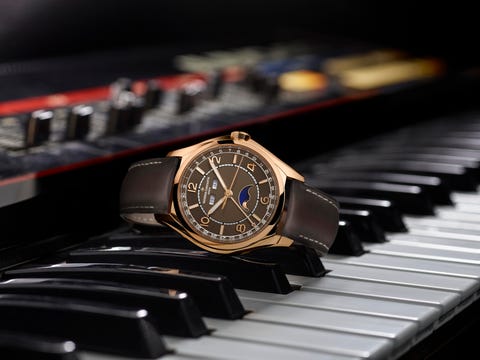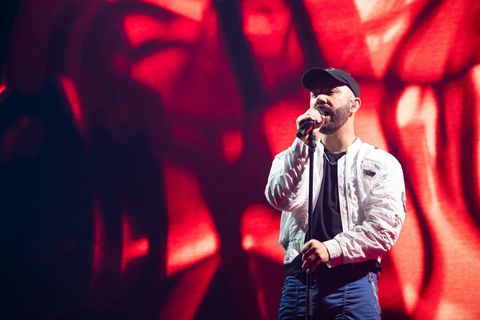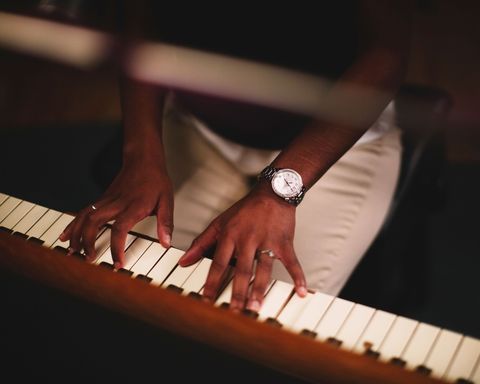“One of Not Many”, keep it in your mind. It’s not the hit of the moment but it has many things in common with the music world. You name that Vacheron Constantin wanted to give to project born in collaboration with Abbey Road Studios in London to offer young talents who want to pursue a musical career a chance to show off their skills. It could not be otherwise. On the other hand, music is an art form and as such it falls within the perimeter of the activities involving the Geneva-based maison, which has always been committed to perpetuating the culture of knowledge and knowledge through the artistic disciplines.
On the musical front, Vacheron Constantin wanted by his side to carry out the Mentoring program an artist of the caliber of Woodkid. Yoann Lemoine, this is his real name, after a successful experience as director of video clips for pop stars such as Lana del Rey, Katy Perry, Rihanna and Drake, he came to the attention of the general public in 2013 with the debut album The Golden Age which also collects Iron, the song with which in 2011 he debuted on the scene. A success that thanks to the 800,000 copies sold has consecrated the French artist on the international music scene. But Woodkid is more than a musical talent. What makes him unique is his artistic vision that also embraces other disciplines and audiovisual projects that have seen him start collaborations in various fields. Starting with the one with the designer Nicholas Ghesquière, and continuing with JR lo street artist French together with which he gave life to a theatrical show that also involved the New York City Ballet. A versatile artist, today Woodkid, as he tells us in this interview, is also a mentor of Vacheron Constantin’s “One of Not Many Mentorship Program”, a project which under his supervision has already seen two young talents such as Ewan J Phillips and Shakira rise to the fore alleyne.
How the collaboration with Vacheron Constantin came about and what it means for you to act as a mentor of the program One of Not Many Mentorships?
I am in a phase of life in which transmission and sharing have become central to me. It espouses my idea of a collaborative approach to work, which is an important part of my DNA as a music video director and composer. So when Vacheron Constantin offered me the mentorship program, I didn’t hesitate for a moment precisely because it crowned the desire I had to make my experience available to help others grow.
Ewan J. Phillips first and Shakira Alleyne then are the two young artists who have benefited from his support and advice. How did they get his attention?
We did a casting involving several musicians and singers. I wanted to choose two very different but similar profiles in terms of artistic skills. Ewan has a timeless pop talent that really impressed me. His music is very accessible and he’s a great singer, and as a producer it’s always a pleasure to work with someone who has a great voice. Shakira has all the great qualities of an artist, a story behind her, a depth and a very unique identity. I think her voice is very unique.
How do you become a successful artist in the field of music? Is it a matter of innate talent or is there something else?
I don’t believe in innate talent, but in skills and hard work. Each of us has strengths and weaknesses. The intelligence of an artist lies in being able to honestly identify them and to capitalize on their strengths, whether it be their voice, their opinion of the world, their musical or commercial aptitudes.
How did you approach music and when did you realize that it could play a central role in your life?
Getting started as a music video director allowed me to develop an affinity for music through learning about rhythm and contrast. I believe that the science of the image and that of music are very close. Of course, when in 2011 I published Iron and I directed the video, everything changed for me and that’s when I realized that music was going to be important in my life.
What do you want to communicate with your music and which audience is it addressed to?
I’m not sure if I’m addressing anyone, it’s not a marketing operation, I think music is actually the opposite, there is a sense of loneliness in it and a call for recognition. It’s like asking, “Does anyone here identify with what I have to say, with what I feel?” It’s a beautiful thing when people respond to this call. This is where the magic of success is found. I’m not even sure what exactly I’m trying to say with my music, it’s varied, the stories and songs are all different, but in general I like people to feel emotions, like on a roller coaster. Life seems very monotonous sometimes and music has this power: to shake things up. I also hope my music sounds different. I always tend to want to make music that goes against standards and rules, and that fights against the unification of the music spectrum in the streaming age.
Is there a figure on the music scene that inspires you or feels inspired by you?
I always think there are people at the top of the creative pyramid, people who have 100% maintained their creative ethics and integrity. Thom Yorke, Johnny Greenwood, Björk, Philip Glass belong to this category. I always tend to keep these figures in mind when I make choices that are too commercial or that contradict my ethics.
In the video pale yellow appears in the company of a robot dog. Today the theme of technology is increasingly central in all sectors and in everyone’s life. What impact does it have on the music industry? Is it an important resource or tool that an artist must know how to manage?
I believe that technology is a beautiful tool to create new and original things. But it’s never enough. I believe that point of view, ethics and political commitment are what make an artist such. I know there is a huge earthquake in the art world right now with regards to AI-generated imagery. I haven’t formed an opinion on that yet, but all I can see now is that beyond the allure of the medium itself, I see 99% redundant and uninteresting images and 1% intriguing and fascinating. Which leads me to think that all that matters behind technology is an opinion, an idea of culture, and an artistic identity.




